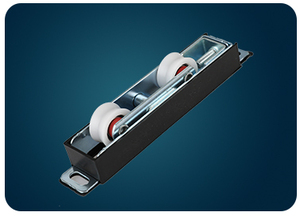-
 Encontrar enMiembros
Encontrar enMiembros Encontrar enVideos
Encontrar enVideos Encontrar enCanales
Encontrar enCanales
This website uses cookies to ensure you get the best experience on our website.
To learn more about our privacy policy haga clic aquíPreferencia de privacidad
- Etiquetas - #sliding lock
-
- Última actualización 14 de diciembre de 2020 0 comentarios, 266 vistas, 0 likes
- Fairview Park, Berkeley, CA - Obtener las direcciones
More from OULAI TOM
More in Politics
Related Blogs
How To Choose Sliding Lock?
Cuerpo
Generally, when purchasing sliding lock for doors and windows, two aspects should be paid attention to:
1. Material
When people buy locks, they are generally worried that the locks are not durable or the surface will rust or oxidize soon after use. This problem is related to the materials used and surface treatment.
From the perspective of durability, a good material should be stainless steel, especially as a surface material, the more it is used, the brighter it is. It has good strength, strong corrosion resistance and unchanged color. However, there are many kinds of stainless steel, mainly divided into ferrite and austenite. Ferritic stainless steel is magnetic, commonly known as stainless iron. It will rust for a long time and in a bad environment. Only austenitic stainless steel will not rust. The identification method is very simple. You can identify it with a magnet.
Copper is one of the widely used lock materials. It has good mechanical properties, good corrosion resistance and processing properties, and has a bright color, especially the copper forged handles and other lock decoration parts. The surface is flat, good density, no pores and sand holes. . It is strong and rust-proof, and can be used to plate 24K gold or placer gold and other surface treatments. It looks magnificent, noble and generous, and adds a lot of color to people's homes.
Zinc alloy materials have much poorer strength and anti-rust ability, but its advantage is that it is easy to make parts with complex patterns, especially pressure casting. The locks with more complicated patterns seen in the market are likely to be made of zinc alloy, and consumers must carefully identify them.
Steel has good strength and low cost, but it is easy to rust. It is generally used as a material for the internal structure of locks and is not suitable for external decoration.
Aluminum or aluminum alloy, ordinary aluminum alloy (except for aerospace use) is soft and light, and the material strength is low, but it is easy to form.
2. Surface treatment
Surface treatment generally refers to the use of metal electrodeposition (commonly known as electroplating), painting (called spraying), chemical oxidation (coloring) or other processing methods to cover or form a protective film on the surface of the part. The film mainly plays a role of anti-corrosion, but also increases the appearance and durability of the product, tilt and turn
It is an important factor to directly measure the quality of products. Common methods for measuring surface treatment include: thickness measurement of the covering layer, adhesion inspection, salt spray and moisture test, appearance inspection, etc. The coating is subjected to coating film adhesion, hardness, moisture test and appearance inspection.
Fotos
Mapa
-
Ubicaciones en MyWorldGo
Información sobre la ubicación
- Ubicación: Fairview Park, Berkeley, CA - Obtener las direcciones











Comentarios